DETECTIVE COMICS 66 (1942)
by Bill Finger & Bob Kane
cover by Jerry Robinson
At this point I’m going to be surprised if a Golden Age cover does have anything to do with the story.
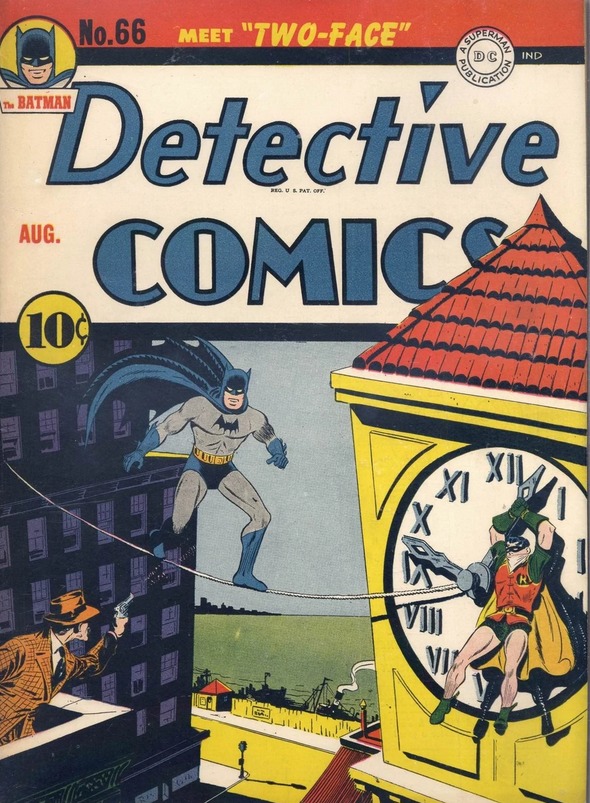
It’s a pity they didn’t use the scene from the teaser page, because that is a perfect way to introduce Two-Face.
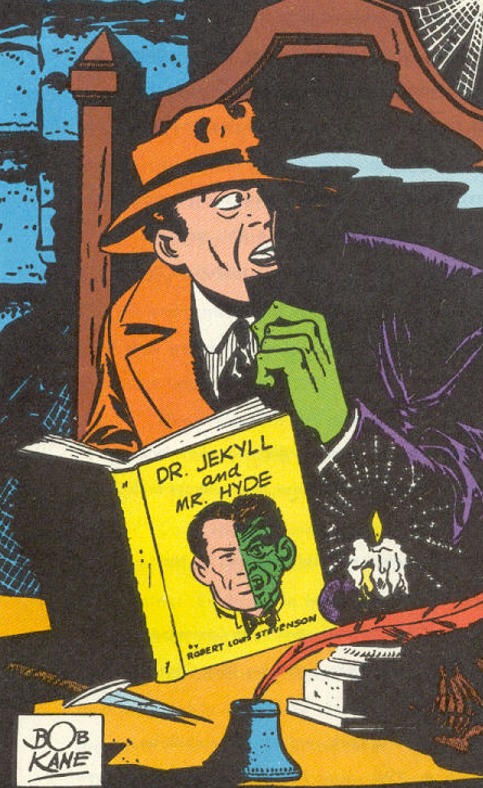
Two-Face’s real name is Harvey Kent during the Golden Age, instead of Harvey Dent.
I don’t think we need to think too much why they changed it.
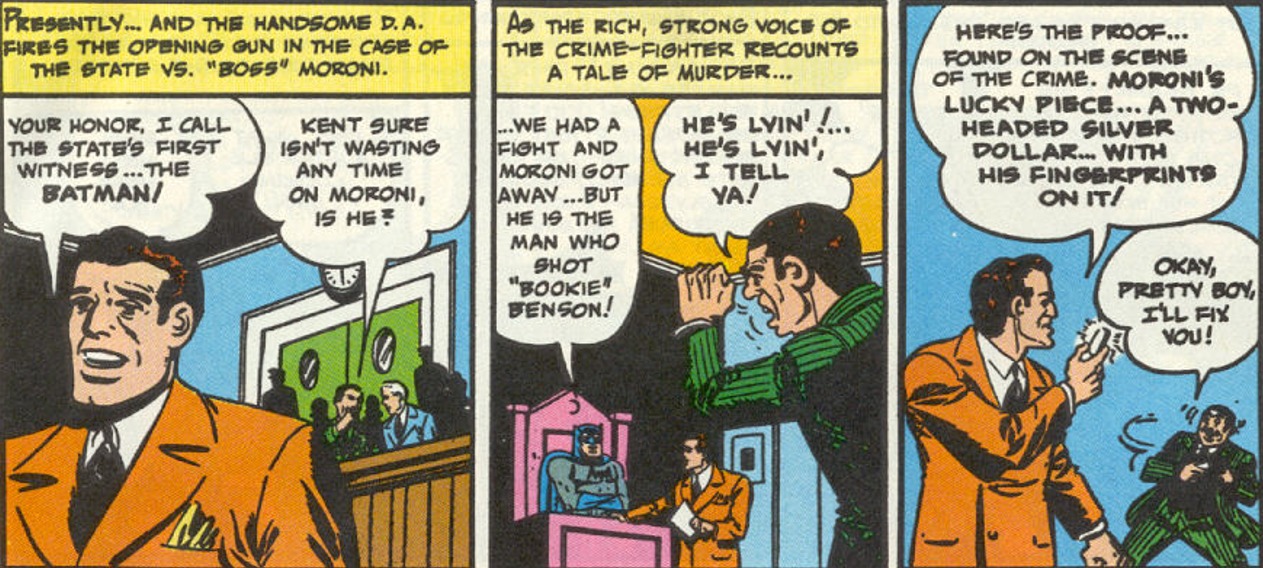
His origin story has been left largely intact across multiple continuities.
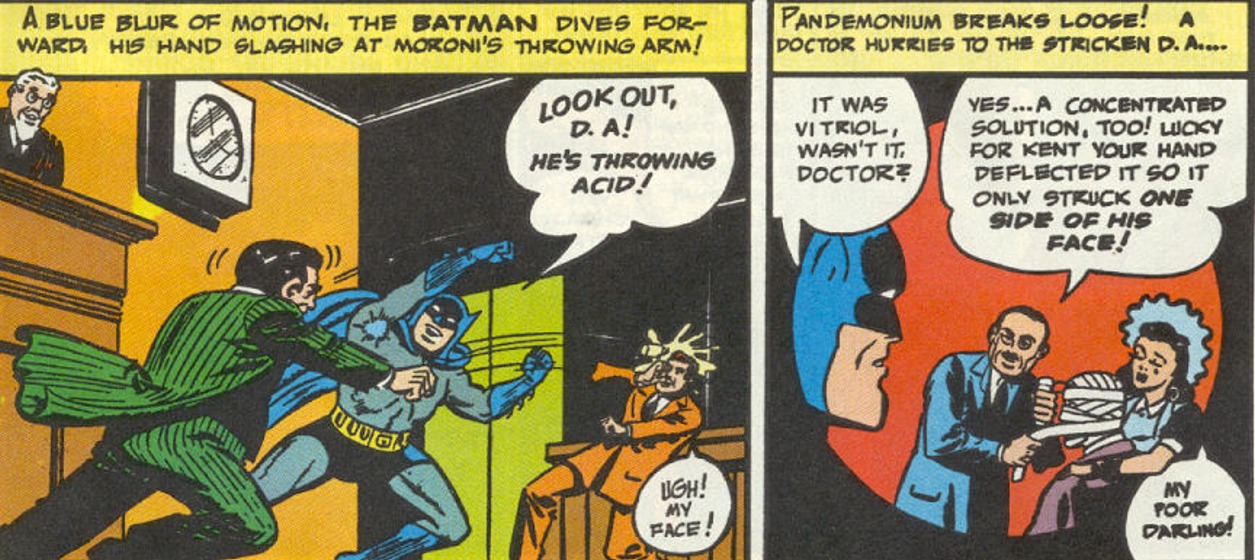
We don’t get any explanation why he goes around with his clothes in two separate colors, though. Because apparently he does that BEFORE he truly becomes Two-Face.
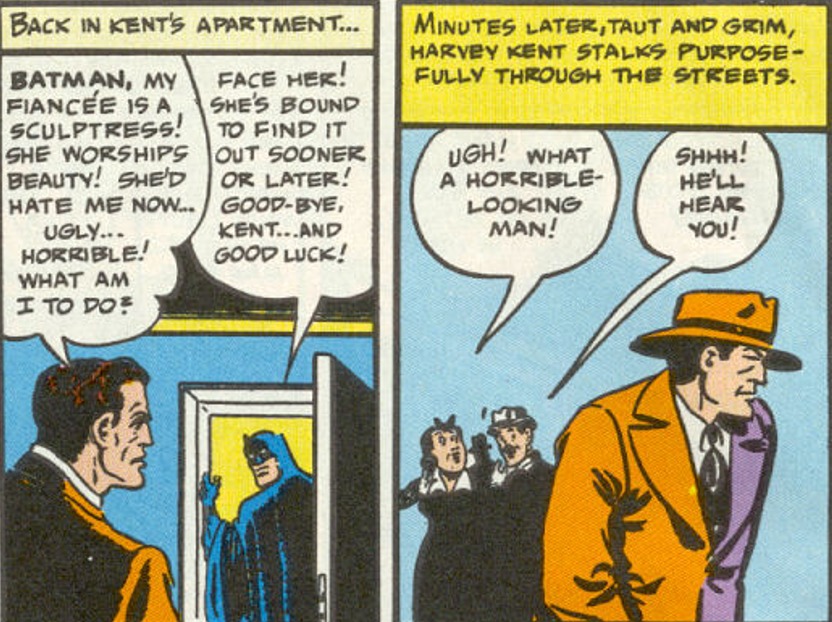
Speaking of which:

How big were coins in the 40s!? That’s not a dollar, that’s a freaking medal!!!

I could make a joke about Two-Face’s constant use of the word queer, but I’m more distracted by his use of metaphors. “I flaunt my two sides like a flag”… which is identical on both sides, so WTF is the point!?

This is a fun version of Two-Face.
Scary when he needs to be, but balanced by being a goody-two-shoes the next moment… that’s something that got lost a bit over the years.
But yeah, Two-Face SHOULD randomly do good stuff just because his coin tells him to!

I guess Bill Finger didn’t trust the readers to figure out the mechanics of this.
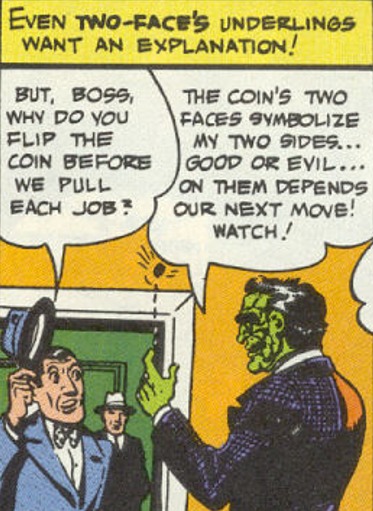
Modern versions have Two-Face’s former identity being a friend of Bruce Wayne. But in the original he used to be friends with Batman instead.

Despite the typical Golden Age lack of subtlety, Two-Face still manages to be a complex villain.

Considering all the Batman villains I’ve covered so far just committed general crimes without committing to a theme, I find it interesting that Two-Face already starts with themed crimes.
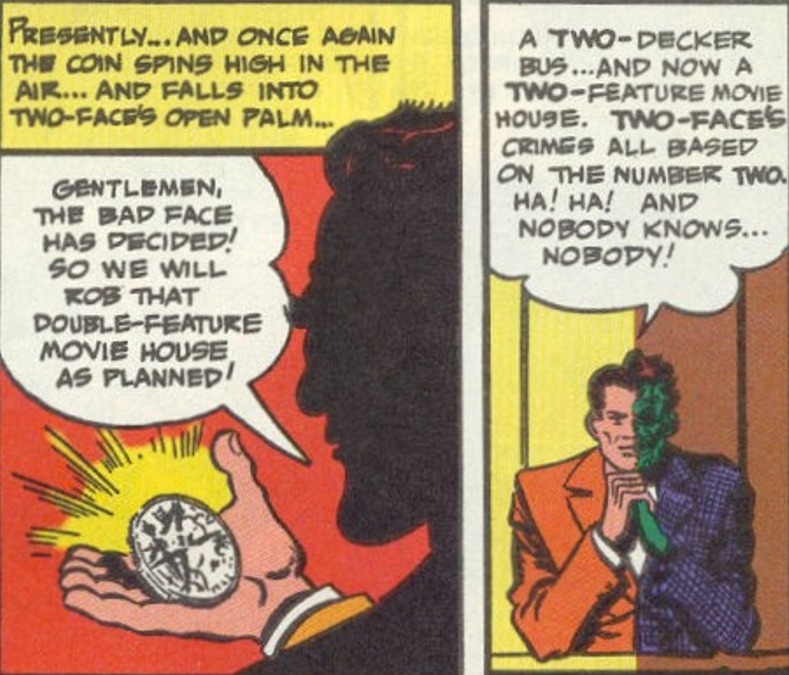
A very rare case of Golden Age cross-continuity, although to be fair it might just be a movie about Superman. I’m not sure when Superman’s existence is acknowledged in the Batman books.

The artwork doesn’t really give it justice, but Two-Face is treated as if his new face is utterly horrifying.

Two-Face manages to pull off the crime, but Batman manages to track him down because he made the mistake of using a one-way street. And if that’s too subtle for you, Two-Face is going to be explaining why this is ironic.
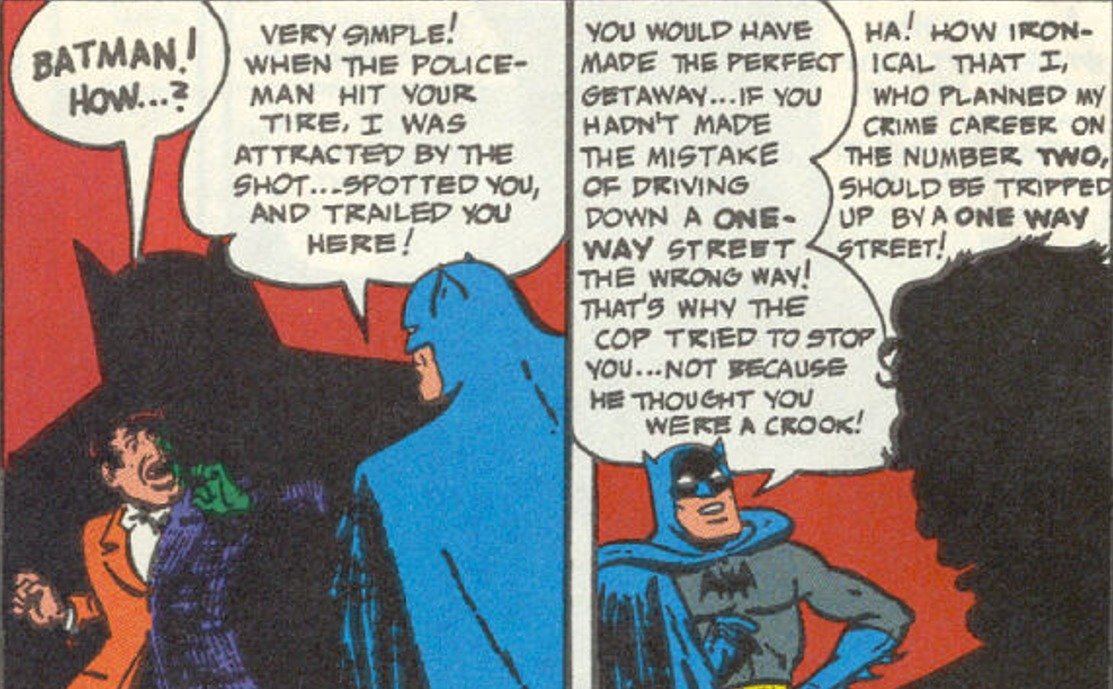
Another thing that will be used in future incarnations is Batman doing his very best to redeem Two-Face.

Two-Face flips the coin to decide whether to kill Batman, and it lands on its side thanks to a crack on the floor.
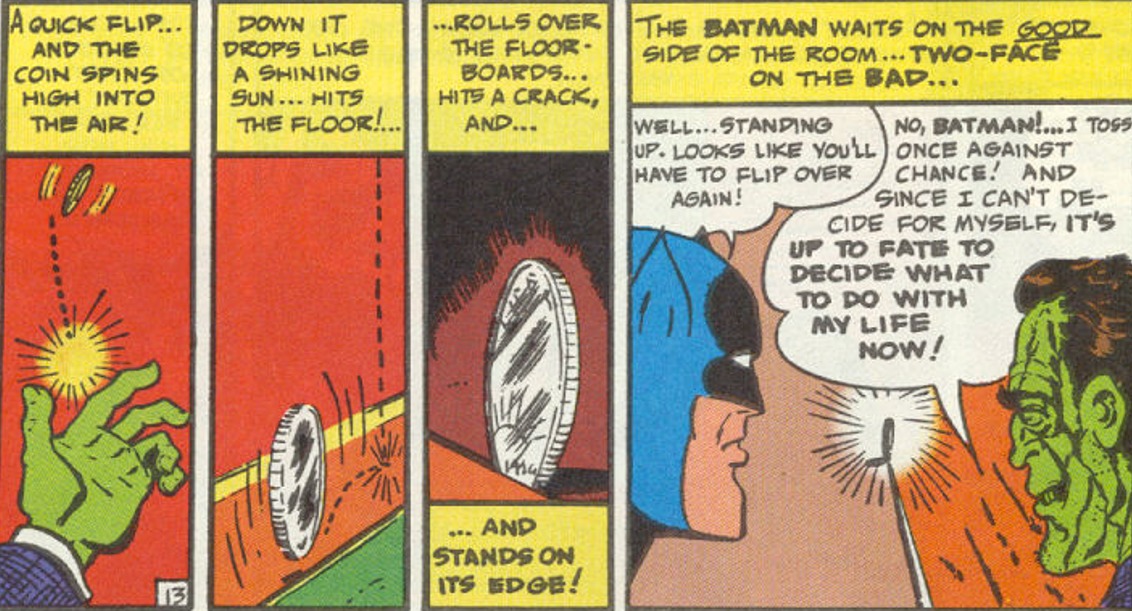
And that’s how it ends, because the story gets its resolution in the following issue. OF COURSE Two-Face would debut in a two-part story.
I could review that one too, but in the spirit of Two-Face…
*tossing a coin*
Nope. The coin says no. Then again, I didn’t use a coin as big as my hand…
Historical significance: 10/10
Two-Face will obviously develop into one of Batman’s greatest villains, sometimes being second (yes I know) only to the Joker.
Surprisingly enough, that’s a recent thing! Two-Face only makes a grand total of 3 appearances in the 40s and only 2 in the 50s. He even got his face fixed and regained his sanity!
Then he completely disappears from comics until 1971 when Denny O’Neil reintroduces him.
Silver Age-ness: 0/10
I suppose the effects of the acid are pretty silly, but that’s just standard comic book logic.
Does it stand the test of time? 7/10
Honestly it would’ve been much higher if Two-Face didn’t constantly explain out loud every single theme and removed every form of nuance from most interactions. It’s still a good story, but the way it keeps holding the reader’s hand hasn’t aged well.
How close is this to the modern character? 10/10
Everything seems to be already there. His former friendship with Batman (instead of Bruce Wayne, but still), him being conflicted between right and wrong, the coin toss, the themed crimes, the possibility of redemption… the story beats are different, but when it comes to the actual character, Two-Face is right there from the start.

Since the cinema scene refers to “the latest Superman” I’d say it’s referring to one of the Fleischer Studios Superman cartoons that were released in the early 1940s. They were ahead of their time in quality and were instrumental in making Superman (and by extension, all superhero comics) better known at the time. DC loved referring to them. There’s even a Superman story where Clark and Lois attend the movies and see one.